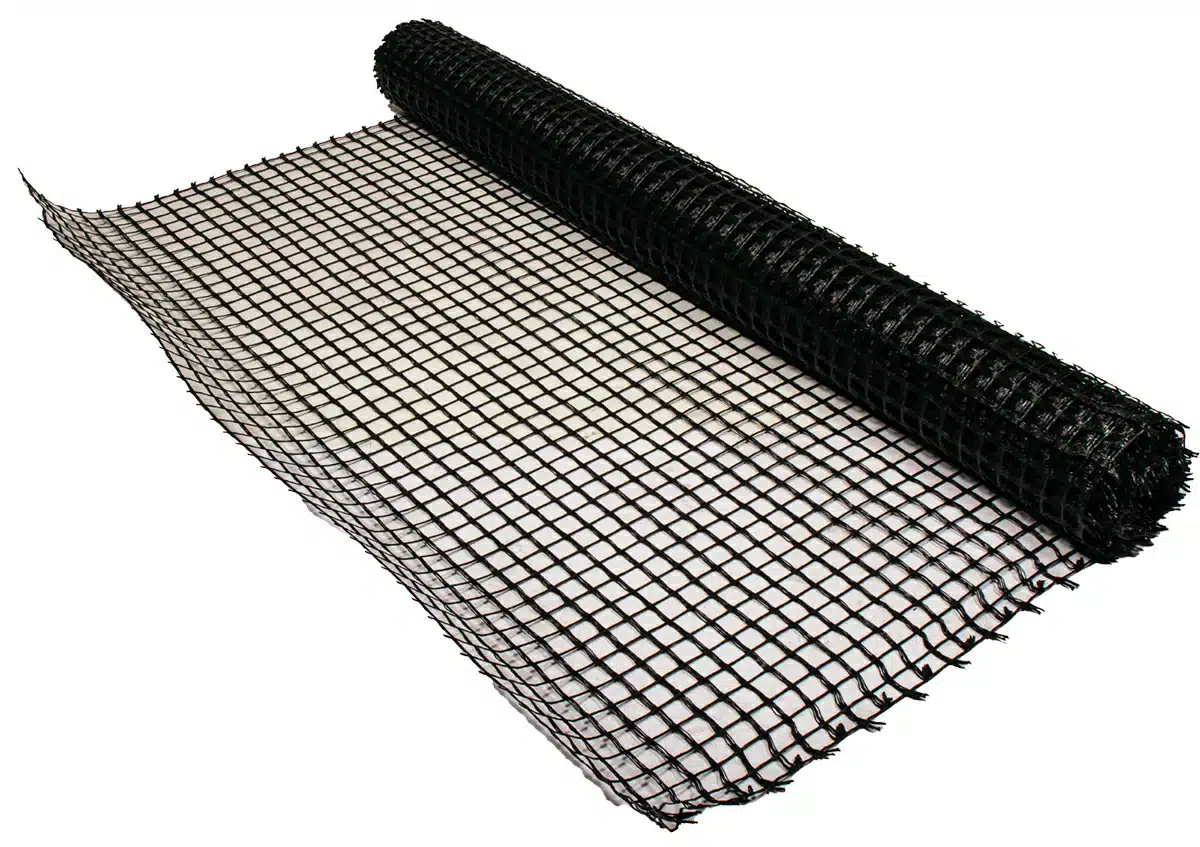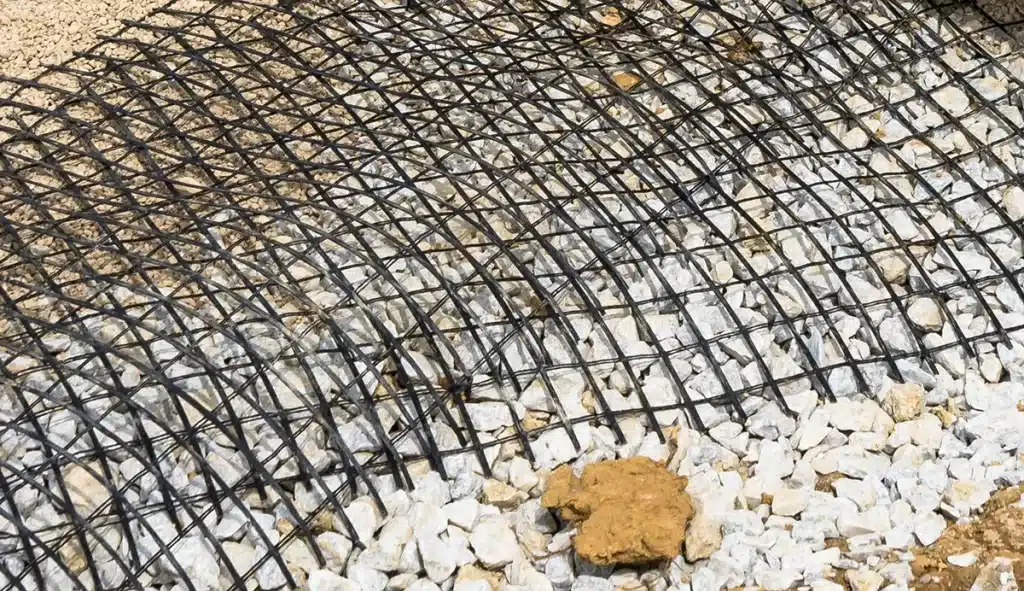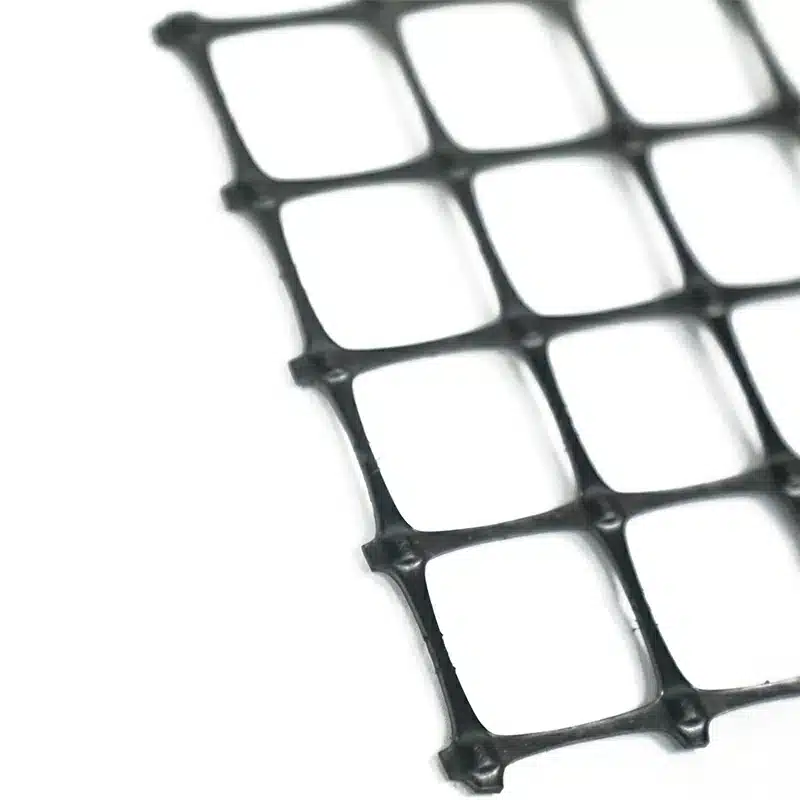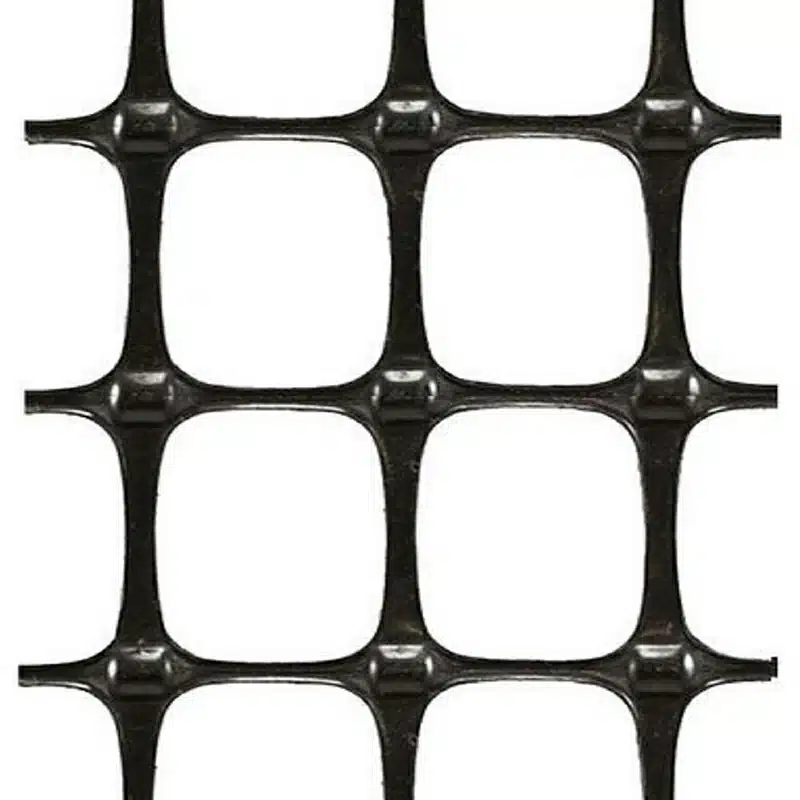+86-159 9860 6917
info@geofantex.com
geofantex@gmail.com
+86-400-8266163-44899
Geogrids are essential in modern construction and civil engineering. In this article, we’ll delve into geogrids – a geosynthetic material used to reinforce soils and similar materials. We’ll explore their applications, when and why they’re used, the various types available, and the benefits they bring over traditional construction methods.

What is a geogrid used for?
Geogrids find diverse uses in construction and civil engineering, offering reinforcement, stabilization, and even filtration when used with properly sized aggregate fills:
- Soil Reinforcement: Geogrids reinforce soil structures like retaining walls and slopes, enhancing load-bearing capacity, reducing settlement, and preventing erosion.
- Pavement Reinforcement: In road construction, geogrids strengthen the base and sub-base layers, distributing loads evenly to reduce cracking and extend the pavement’s lifespan.
- Foundation Support: Geogrids support building and structure foundations, especially in weak or unstable soil areas, enhancing stability and preventing settlement.
- Erosion Control: Geogrids stabilize slopes, embankments, and riverbanks, effectively preventing erosion by keeping soil in place.
When should geogrid be used?
Geogrids should be evaluated for different situations to enhance construction projects, especially for walls taller than three to four feet:
- Soil Conditions: Geogrids are valuable when dealing with weak or loose soils that lack natural stability.
- Load-Bearing Requirements: In projects with heavy loads or traffic, geogrids distribute the load, preventing deformation or settlement.
- Slope Stability: They’re crucial for reinforcing slopes and embankments, averting landslides and erosion.
- Erosion Risk: In areas prone to erosion, geogrids maintain soil integrity and protect against erosion damage.

What are the types of geogrids available?
Geogrids are available in various types, each suited to specific applications:
- Uniaxial Geogrids: These have strength in one direction, making them ideal for applications where reinforcement is needed in a single plane, such as road construction.
- Biaxial Geogrids: With strength in both directions, biaxial geogrids are versatile and often used for stabilizing soil and preventing erosion in different directions.
- High-Modulus Geogrids: These geogrids are designed for applications requiring high stiffness and load-bearing capacity.
What are the advantages of using geogrids over traditional construction methods?
Using geogrids offers several advantages over traditional construction methods:
- Cost-Efficiency: Geogrids reduce the need for excessive excavation and backfill materials, leading to cost savings.
- Improved Durability: Geogrids enhance the structural integrity of projects, prolonging their lifespan and reducing maintenance costs.
- Environmental Benefits: Geogrids can help in eco-friendly construction by reducing soil excavation and minimizing the impact on the environment.
- Versatility: Geogrids can be customized for various applications, offering flexibility and adaptability in construction projects.
In conclusion, geogrids are indispensable tools in construction and civil engineering, providing stability, durability, and sustainability. Understanding their applications, types, and benefits empowers engineers and builders to make informed choices and transform their projects for the better.



Get Free Sample
We’ll respond as soon as possible(within 12 hours)






















